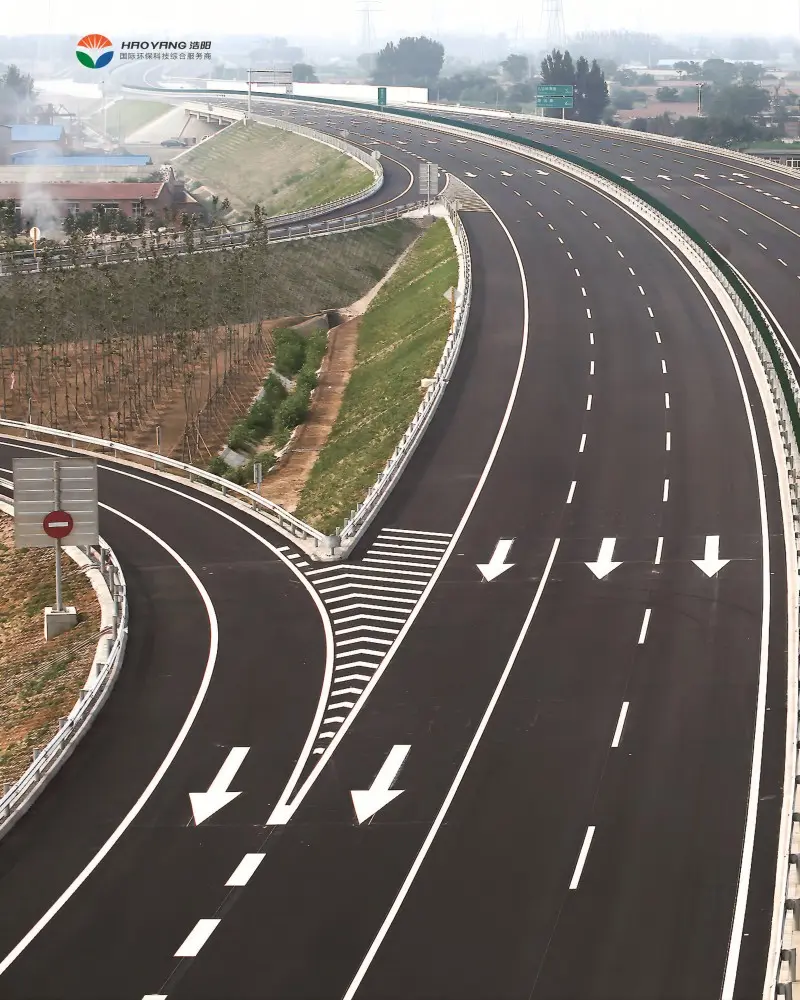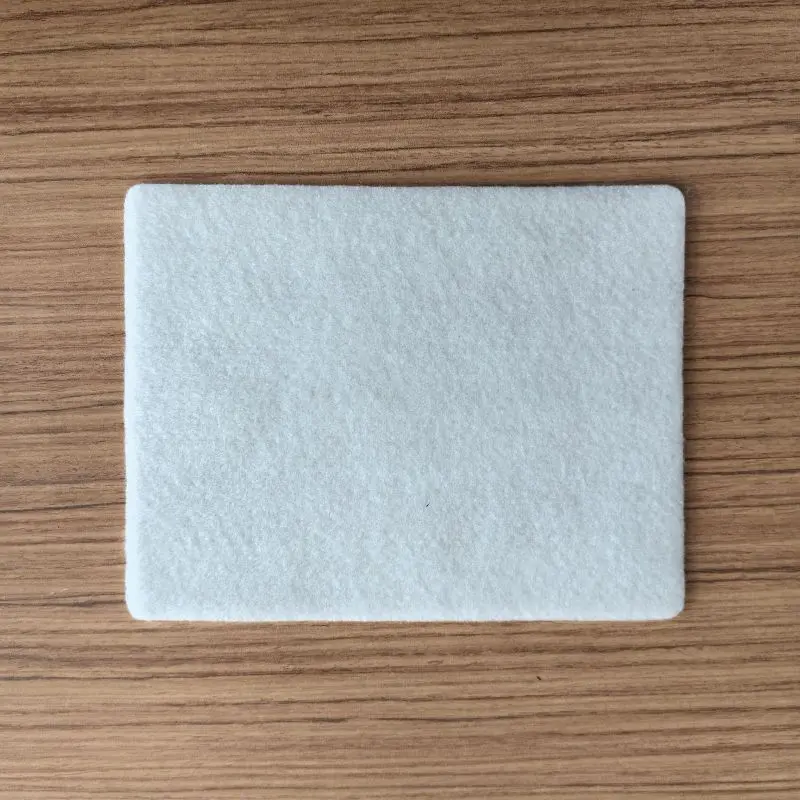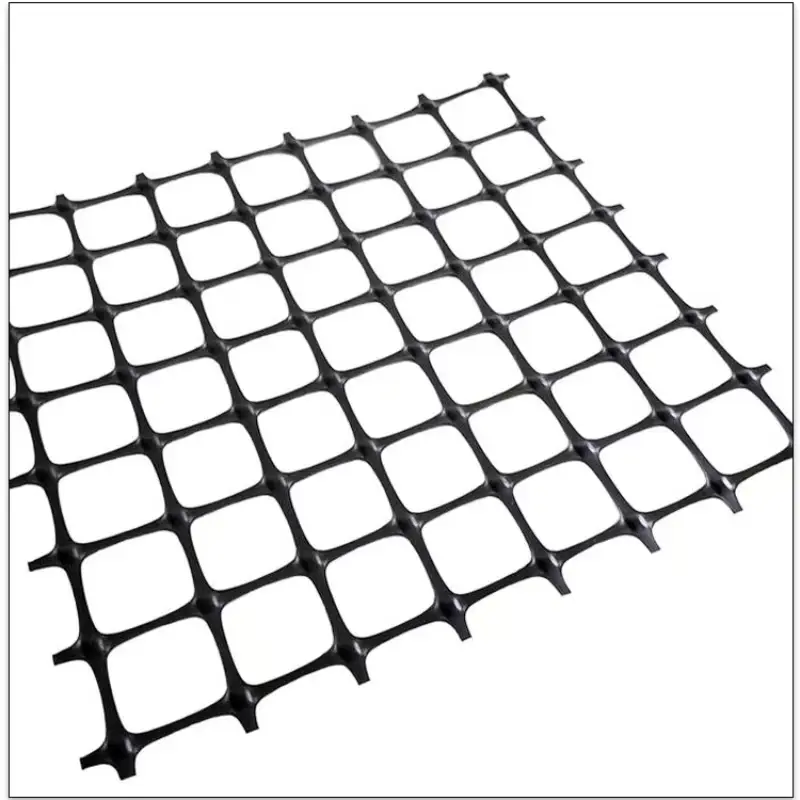Construction Transpotation

Geosynthetic products play a crucial role in advancing construction and transportation projects. These specialized materials, including geotextiles, geogrids, and geomembranes, contribute significantly to enhancing the performance and longevity of infrastructure. The integration of geosynthetic products in construction and transportation underscores their importance in creating sustainable, resilient, and high-performing infrastructure systems.
We participated and completed this gongc as Staple nonwoven geofabric manufacturer and supplier
Beijing-Shijiazhuang High-Speed Rail Project
811453.webp)
Background:
On October 7, 2008, construction commenced on the Beijing-Shijiazhuang High-Speed Rail. On July 25, 2012, the entire rail line was fully laid, and it officially commenced operations on December 26, 2012. The main line of the Beijing-Shijiazhuang High-Speed Rail runs from Dujiakan Line Depot to Shijiazhuang Station, with the Dujiakan Line connecting to Beijing West Station via the Jingxi Connecting Line. The total length of the Beijing-Shijiazhuang High-Speed Rail is 283.672 kilometers, with a design speed of 350 kilometers per hour and an initial operational speed of 300 kilometers per hour. Starting from June 20, 2022, the Beijing-Shijiazhuang section of the Beijing-Guangzhou High-Speed Rail has achieved regular operation at a high standard speed of 350 kilometers per hour.
According to the diverse construction requirements of this project, various products supplied by our company have been utilized in different sections. These include approximately 87,000 square meters of bidirectional stretched geogrid with a specification of 30 kN/m, 67,000 square meters of bidirectional stretched geogrid with a specification of 100 kN/m, as well as geotextiles.
Problems:
Considering the need to ensure the smooth operation of high-speed trains during high-speed travel, a major challenge in high-speed rail construction is controlling the deformation of the subgrade. This deformation occurs in areas with abrupt changes, such as the transition sections between bridge piers and the subgrade, tunnel exits, and similar locations. Such changes introduce an uneven additional impact force on the fast-moving train wheels, leading to uncomfortable driving conditions. In severe cases, this can reduce the structural lifespan and even pose safety risks. The resulting damage adds to the expensive maintenance and repair costs. Therefore, the use of geosynthetic materials in the transition sections between bridges and roads can effectively overcome this problem. However, it is crucial to maintain high-quality standards for geosynthetic materials to ensure their effectiveness in addressing these issues.
Our Solutions
226264.webp)
1、Polypropylene Staple Fiber Needle-punched Geotextile: This geotextile is characterized by high strength, excellent elongation properties, large deformation modulus, and resistance to acid, alkali, and corrosion.
2、Biaxial Stretched Geogrid: This geogrid boasts high strength, low elongation, and plays a crucial role in reinforcing and strengthening. It effectively reduces the impact of bumps in transition sections, contributing to a smoother ride.
Product Details
1, Polypropylene Staple Fiber Needle-punched Geotextile

Polypropylene staple fiber needle-punched geotextile is a geotechnical material made by needle-punching short-cut polypropylene fibers. This geotextile exhibits high strength, good elongation properties, a large deformation modulus, and is resistant to acid, alkali, and corrosion.
In railway construction, the role of polypropylene staple fiber needle-punched geotextile includes the following aspects:
1), Soil Reinforcement and Stabilization: The geotextile can be used in railway subgrades to enhance the tensile strength and stability of the soil, slowing down erosion and settlement and ensuring the stability of the subgrade.
2), Erosion Prevention: In areas with steep slopes or prone to soil erosion along the railway route, the geotextile can be used as slope protection material to prevent soil loss and erosion, maintaining the integrity of the subgrade.
3), Isolation Layer: In certain situations, polypropylene staple fiber needle-punched geotextile can function as an isolation layer, preventing the mixing of different types of soil or materials and improving the stability and durability of the engineering structure.
2, Biaxial Stretched Geogrid

Bidirectional stretched geogrid is a geotechnical material characterized by high strength and low elongation. This material undergoes a process of bidirectional stretching during production, forming a structurally stable grid that evenly distributes loads. In transportation construction, the roles of bidirectional stretched geogrid include the following aspects:
1), Enhancing Soil Bearing Capacity: Bidirectional stretched geogrid effectively reinforces the tensile strength of the soil, improving the soil's bearing capacity. This is particularly crucial in transportation engineering, as it can strengthen the subgrade and support structures, reducing deformation and settlement of the pavement.
2), Slowing Subgrade Settlement: By incorporating bidirectional stretched geogrid into the subgrade, the rate of soil settlement can be effectively slowed down, maintaining the stability of the subgrade and extending its lifespan.
3), Improving Pavement Smoothness: Bidirectional stretched geogrid disperses and transmits loads, reducing the impact of loads on the pavement. This helps improve pavement smoothness and enhances driving comfort.
4), Preventing Lateral Movement of Subgrade: The application of bidirectional stretched geogrid in the subgrade can effectively restrain lateral movement of the soil, preventing subgrade sliding and soil erosion along the alignment.
Our Capabilities
Haoyang Environmental Co., Ltd. was established on June 6, 2008. The company is located in the National High-tech Industrial Development Zone in Dezhou (Yucheng), Shandong Province. Haoyang Environmental is an international environmental technology and comprehensive service provider, integrating the research and manufacturing of geosynthetic materials, environmental engineering consultation, design, and construction, as well as investment, operation, and comprehensive treatment of solid waste for environmental governance.
894986.webp)
Thi is the Bidirectional Geogrid Production Line.
This equipment utilizes polypropylene resin as its raw material. After melting through a screw extruder, the material is extruded through a T-shaped die into sheets using a three-roller calender. Subsequently, the sheets are fed into a longitudinal stretching oven after being punched by a punch press to form a semi-finished product. The semi-finished product then undergoes transverse stretching in another oven to become bidirectional geogrid. The production line can manufacture bidirectional geogrid with a width ranging from 1 to 6 meters, and a maximum strength of 60 kN. The production capacity reaches 5000 tons per year.
Advanced Features of the Equipment:
1, Can produce products of any specifications with a width ranging from 1 to 6 meters.
2, The maximum strength of the product can reach 60 kN.
494336.webp)
This is the Medium-Speed Staple Needle Punched Geotextile Production Line.
This equipment use chemical fibers such as polyester, polypropylene, and nylon as raw materials. The production process involves a pre-opening machine, a fine-opening machine, an air-pressure vibrating cotton box, a new-type carding machine, a web laying machine, a needle punching machine, and a winding machine to produce geotextiles. The product weight ranges from 120 to 500 g/m², with a production capacity of 300 kg/h, a maximum width of 6.0 meters, and an annual production capacity of 2500 tons.
Advanced Features of the Equipment:
1, Adoption of double tumbler, double doffer, and double random carding machines for uniform web output.
2, The web laying machine ensures uniform web laying with minimal product weight fluctuations (low CV value).
3, The needle plate uses an unordered needle-punching method with a high needle density, offering a wide range of needle punching density choices. This results in not only a uniform surface but also high physical performance of the product.
Certifications:
The short fiber equipment features a patented pressing device (patent certificate).
689404.webp)
This is the High-Speed Staple Nonwoven Geotextile Production Line.
This equipment use chemical fibers such as polyester, polypropylene, and nylon as raw materials. Through processes including opening, carding, web laying, needle punching, and winding, it produces geotextiles.
The machine is equipped with a double carding machine. The product weight ranges from 100 to 1000 g/m², with a maximum width of 6.4 meters and an annual production capacity of 3000 tons.
Advanced Features of the Equipment:
1, The entire machine adopts PLC+touch screen control, ensuring high precision in product quality control.
2, A new type of feeding cotton box with large storage capacity ensures uniform feeding.
3, The use of double tumbler, double doffer, and double random carding machines allows fibers to be distributed in a multidimensional manner in the fiber web, improving uniformity in all directions.
4, The machine can produce woven composite geotextiles. By using needle punching technology to composite three layers of geotextiles—upper layer of short fiber geotextile, middle layer of woven geotextile, and lower layer of short fiber geotextile—it combines the characteristics of high tensile strength in both longitudinal and transverse directions, high CBR puncture strength, and low breaking elongation. It also inherits the properties of needle-punched nonwoven fabric.
Certifications:
A patent certificate for a composite geotextile.
FAQ
1: What is Polypropylene Staple Needle-punched Geofabric, and how is it used in construction and transportation projects?
Polypropylene staple needle-punched geofabric is a geotechnical material made from polypropylene fibers that are needle-punched for reinforcement. It is commonly used in construction and transportation to enhance soil stability, control erosion, and provide support in infrastructure projects.
2: What are the key advantages of using Polypropylene Staple Needle-punched Geofabric in construction and transportation applications?
Polypropylene staple needle-punched geofabric offers high strength, excellent elongation properties, and corrosion resistance. It effectively stabilizes soil, controls erosion, and contributes to the longevity and performance of structures in construction and transportation projects.
3: How does Polypropylene Staple Needle-punched Geofabric address challenges related to soil deformation in transportation infrastructure, such as roads and embankments?
This geofabric helps control soil deformation in critical areas like transition zones, bridges, and tunnels. By reinforcing the soil, it minimizes additional impact forces on the infrastructure, ensuring a smoother ride and reducing discomfort for passengers.
4: Can Polypropylene Staple Needle-punched Geofabric be customized for specific construction and transportation requirements?
Yes, Polypropylene Staple Needle-punched Geofabric can be customized to meet specific project requirements. It is available in various specifications, allowing adjustments in strength, width, and other properties to suit the unique needs of construction and transportation applications.
5: What role does the quality of Polypropylene Staple Needle-punched Geofabric play in ensuring the durability and performance of construction and transportation projects?
The quality of Polypropylene Staple Needle-punched Geofabric is crucial for its effectiveness. High-quality geofabric with proper strength and stability ensures reliable reinforcement, contributing to the overall durability and performance of construction and transportation projects.
811453515.webp)


781.webp)